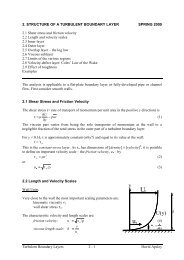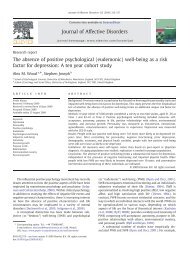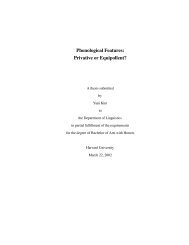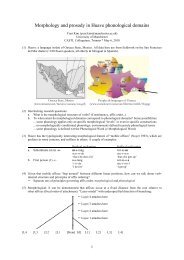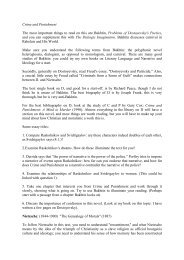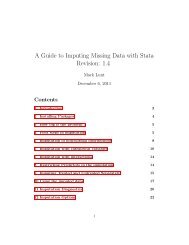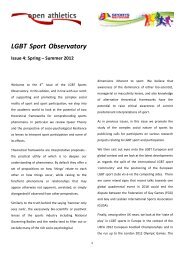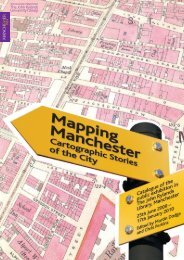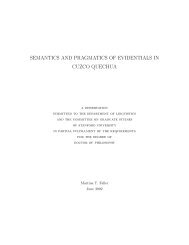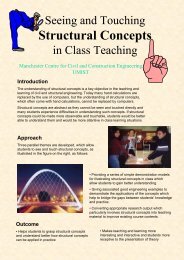Hamied Ahmad Haroon MInstP MSc PhD - The University of ...
Hamied Ahmad Haroon MInstP MSc PhD - The University of ...
Hamied Ahmad Haroon MInstP MSc PhD - The University of ...
Create successful ePaper yourself
Turn your PDF publications into a flip-book with our unique Google optimized e-Paper software.
Employment History:<br />
Sep 2010 <strong>The</strong> <strong>University</strong> <strong>of</strong> Manchester<br />
– Aug 2013: Postdoctoral Research Associate in Magnetic Resonance Imaging for Image<br />
Reconstruction, Compressed Sensing and Biomarker Measurement, on a Wellcome<br />
Trust Technology Development Grant (091369/Z/10/Z) – “Biomedical Sparse<br />
Parametric Imaging”: Tomographic imaging techniques such as magnetic resonance imaging have<br />
revolutionised medicine by allowing us to visualise the 3‐D structure <strong>of</strong> the human body. Visualisation<br />
is itself immensely useful, but it is now apparent that measurements derived from these imaging<br />
techniques—e.g., biomarkers like ventricular volume or blood flow—can be used to make clinical<br />
decisions according to established criteria, and to develop and test scientific hypotheses. However,<br />
quantification is rare outside research centres because <strong>of</strong> the specialist knowledge and s<strong>of</strong>tware<br />
needed. Bringing quantification to the many scanners already deployed would constitute a significant<br />
advance. We aim to develop a generic method <strong>of</strong> making morphological and functional measurements<br />
from tomographic measurements. We will develop this method in two clinical exemplars: heart<br />
disease (we aim to measure biomarkers such as ventricular volume and ejection fraction) and cancer<br />
(we aim to measure biomarkers such as microvascular permeability). <strong>The</strong> key goals <strong>of</strong> the project are<br />
to further develop the theoretical framework underpinning the project, develop and apply the method<br />
in the clinical exemplars, and compare measurements made using the method with conventional<br />
measurements (e.g., cardiac MRI‐ and ultrasound‐based measurements <strong>of</strong> ejection fraction).<br />
Supervisors: Pr<strong>of</strong> Ge<strong>of</strong>f JM Parker, Dr Chris J Rose, Pr<strong>of</strong> Tim F Cootes and Pr<strong>of</strong> Chris J<br />
Taylor OBE, Imaging Science & Biomedical Engineering<br />
Sep 2009 <strong>The</strong> <strong>University</strong> <strong>of</strong> Manchester<br />
– Aug 2010: Postdoctoral Research Associate in Magnetic Resonance Neuroimaging for<br />
Processing and Analysis <strong>of</strong> MR Diffusion Imaging and Tractography; Supervisor: Pr<strong>of</strong><br />
Ge<strong>of</strong>f JM Parker, Imaging Science & Biomedical Engineering<br />
Sep 2006 <strong>The</strong> <strong>University</strong> <strong>of</strong> Manchester<br />
– Aug 2009: Co‐Applicant, Researcher‐Co‐Investigator and Postdoctoral Research Associate in<br />
Magnetic Resonance Neuroimaging for Processing and Analysis <strong>of</strong> MR Diffusion<br />
Imaging and Tractography, on a Biotechnology and Biological Sciences Research<br />
Council Research Grant (BB/E002226/1) – “Temporal Lobe Anatomical Connectivity”:<br />
<strong>The</strong> aim <strong>of</strong> this study is to establish the degree <strong>of</strong> cross‐species homology in white matter connections<br />
within and to/from the temporal lobes. We will use diffusion weighted MRI (DWI) to provide non‐<br />
invasive probabilistic anatomical connectivity information in the human brain and compare this with<br />
connectivity information derived from animal models. High resolution postmortem DWI data will allow<br />
‘gold standard’ comparison with literature and electronic database information regarding anatomical<br />
connectivity. This will be compared with DWI data acquired in vivo in a population <strong>of</strong> healthy brains to<br />
define the degree <strong>of</strong> population variability in temporal lobe connectivity and the experimental limits <strong>of</strong><br />
in vivo DWI tractography. Cross‐species homology will be investigated via a series <strong>of</strong> exemplar<br />
experiments. A significant additional end point will be the creation <strong>of</strong> an online database <strong>of</strong> temporal<br />
lobe anatomical connectivity, which will be made available to researchers, forming a unique and<br />
valuable resource for the neuroscience community.<br />
Supervisors: Pr<strong>of</strong> Ge<strong>of</strong>f JM Parker and Pr<strong>of</strong> Matt A Lambon Ralph, Imaging Science &<br />
Biomedical Engineering; Collaborators: Pr<strong>of</strong> Nikos K Logothetis and Dr Tim B Dyrby<br />
May 2004 <strong>The</strong> <strong>University</strong> <strong>of</strong> Manchester<br />
– Aug 2006: Postdoctoral Research Associate in Magnetic Resonance Neuroimaging for<br />
Processing and Analysis <strong>of</strong> MR Diffusion Imaging and Tractography, on a Medical<br />
Research Council Pathfinder Award (G0300952) – “Understanding the neural basis <strong>of</strong><br />
semantic impairment in temporal‐variant frontotemporal dementia (semantic<br />
dementia): Insights from white‐matter tractography and functional MRI”: Semantic<br />
memory refers to our knowledge <strong>of</strong> objects, people, places, facts and the meaning <strong>of</strong> words. <strong>The</strong><br />
temporal lobe variant <strong>of</strong> frontotemporal dementia (tvFTD), or semantic dementia, is characterised by<br />
a selective loss <strong>of</strong> semantic memory with a sparing <strong>of</strong> other cognitive systems. In previous<br />
neuropsychological investigations and computational models we have demonstrated that this<br />
semantic impairment reflects damage to a single, amodal semantic system arising from the<br />
heteromodal association cortex <strong>of</strong> the temporal lobes. <strong>The</strong> success <strong>of</strong> this model emanates from the<br />
combination <strong>of</strong> neuroanatomical and behavioural information. Future developments require a much<br />
improved understanding <strong>of</strong> how areas <strong>of</strong> temporal neocortex are interconnected and linked with<br />
http://personalpages.manchester.ac.uk/staff/hamied.haroon/ 2 / 13 07 December 2012






